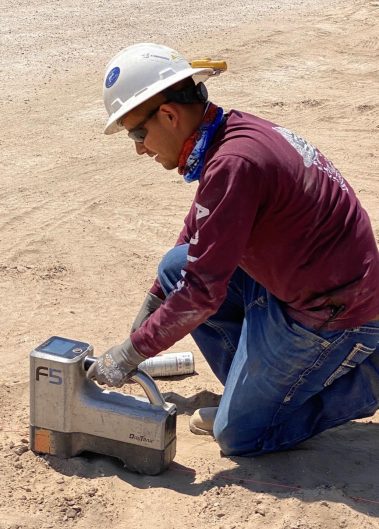The Better, Less Expensive, Safer, Faster Alternative
Horizontal Boring
Only a few decades ago, laying a pipeline or a utility run meant trenching. And that meant ripping, tearing, shredding anything that lay within the path of the run. There was simply no other way to get the job done.
But then horizontal boring technology was developed. And pioneering companies like West Texas Boring Company offered a better way to lay underground infrastructure from point A to point B.
Instead of destroying everything between points A and B in excavating a costly, time-consuming trench, the alternative is to bore beneath the surface. Simply slip underneath the surface at point A, and reemerge at point B. All points in between are left undamaged and undisturbed.
Massive Benefits
The benefits offered by horizontal boring are extensive. Compared to the alternative of trenching, horizontal boring enables:
- Lower project costs
- Deeper installations as needed
- Shorter project completion times
- Safety when digging underneath lines because of the use of transits and sonar technology to determine the precise clearance of all lines in the path
- Minimal environmental disturbance
- No disruption to infrastructure between entry and exit points
- Faster project completion
- Cheaper project completion in many situations
- Minimal surface restoration requirements
- Negligible contamination of soil along pipe runs
Unlimited Applications
Through the years, the technology behind horizontal boring has progressed rapidly. Today, horizontal runs of greater than a mile are possible, with bore diameters of up to 4 feet. As a result, the benefits of horizontal boring are valued by a wide range of industries.
Though traditionally utilized by the oil and gas industry, other uses for trenchless technology includes:
- Telecommunications lines
- Power conduits
- Water lines
- Sewer lines
- Product pipelines
- Environmental remediation
Our diverse inventory of equipment and reamers allows us to pull pipe ranging in diameters of 1” conduits to 42”steel casing in distances from 50 to 4,000’.
Ready to get started? We Are Here to Assist Every Step of the Way.
“One of the best boring companies I’ve ever worked with.”
“Great place to unload, easy to find. Skilled operators to unload casing. Fast service.”
“WTB is a great place for those that are motivated, willing to learn, and work hard. They’re constantly expanding and striving to grow as big as the great state where it all began.”
“Great job, West Texas Boring Co Inc., for completing another HDD on our 20” line replacement project here in Ohio! 👏🏻👏🏻 Four down, four to go!”
“Worked here, amazing place.”
“Hey man, huge fan! Love watching your videos. I operate a 10×15 and work for my local city. Keep up the content. It inspires me every day!”
“The best HDD contractor in the Permian Basin and beyond.”
“I have never seen anything like it. It’s very interesting. Thank you for explaining to me very precisely. I wish you success.”

